
"To Kill a Mockingbird" by Harper Lee creates a creative look on segregation in life in the 1930's. As the story goes along, Scout and her brother Jem experience many changes throughout the summer of 1935. Their father, Atticus Finch, defends a black man after the man was accused of an unsolved crime. The event creates much thought and debate on the subject of segregation. The book has many great turns and the potential of characters was used to a full extent. I highly recommend the read for it will give readers an excellent idea of how life was those many years ago.
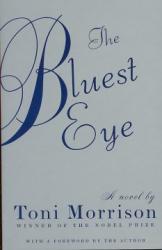
The Bluest Eye is about a young African-American girl named Pecola living in 1940's Ohio. Pecola lives with her brother and abusive parents who constantly tell her she is ugly because of her dark skin and kinky hair. On top of that, the children at her school bully her for the fact that her father is an alcoholic. All her life, Pecola has wanted blue eyes to feel pretty. Her only friends, Freida and Claudia try to defend her against the colorism in their community, but Pecola is unable to embrace her features and becomes obsessive over her desire for blue eyes.
One of the reasons I read this book is because of Morrison's writing style and her thematic elements. The book is very intellectually stimulating and gave me better insight into colorism and how it is still largely prevalent today in the African-American community. I really liked how Morrison used a young girl as a main character to show how these feelings of low-esteem and poor body image are started at a young age, and how the people around us influence our thoughts and feelings.
There are a lot of complex characters and you get to hear each of their stories about why they're the way they are. Claudia is my favorite character because she represents women and girls who challenge our ideas of beauty. The ending was sad, but it really brought light to how damaging our obsession with beauty is.
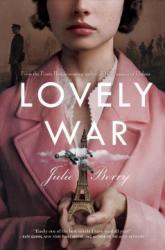
After being caught with her lover, Ares, Aphrodite tells the stories of two couples that fell in love during World War 1. James and Hazel met at a party that Hazel was playing piano for. They start to go on dates and they really like each other, but James is shipped of to the battlefield. Hazel decides to join the Red Cross to be closer to James. There she meets Colette, who becomes a fast friend.
This book was amazing! I loved the perspective of the gods on the story. They often make appearances to discuss specific parts of the story relating to the gods' affinities. I also loved seeing the couples be together, even during their struggles. While reading this book I cried multiple times and couldn't be happier about that.
I would also highly recommend the audiobook. There were so many different narrators it truly felt like I was in the story. One of the characters passions is composing music and in the audiobook you can actually hear the music! It is a wonderful experience.

Jacob's grandfather has always told crazy stories. Stories about faceless monsters and kids with mysterious abilities. When he was younger Jacob believed these stories because his grandpa had scary pictures of these strange kids, but as he got older Jacob thought these were just little kid stories until a family tragedy brings one of those monsters from his childhood to life. This tragedy gets him to travel to a small island off the coast of Whales, where he begins to discover more about his grandpa the peculiar children from his stories.
The atmosphere that the author created for this book was amazing. You can feel eeriness of the things that Jacob sees through the pages. It is only enhanced by the pictures of strange things scattered throughout the story. The unique characters and idea held my attention completely and the fast-paced plot made me think it was over to soon. This book is part of a long series that I can't wait to continue!
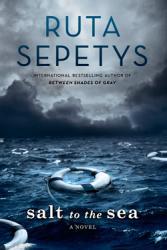
Salt to the Sea is about 4 people who are running from their past in the midst of WWII. Joana is a nurse fleeing from the dangers of Lithuania, with the hope that a ship will take her out of Europe. Florian is on the run from a mistake he made back in Germany also looking for the chance to escape without anyone finding him and taking him back to Germany. Emilia has finally decided to flee from the family that was taking care of her after the woman and her daughters betray her trust. Alfred is escaping reality by joining the German fleet to escape the mistake he made that cost him his girlfriend and his sanity. As the book continues all the character's paths join and they meet on the Wilhem Gustoff- a bigger tragedy than the sinking of the Titanic. The ship that promises safety, ends in tragedy. This is my favorite author, and out of all her books, this one is my absolute favorite. The character's stories blend together to make all the little plots into one overarching plot which I think is really cool. The chapters switch off narrators so you get to see the story in different perspectives. I like how the author shows a different side of the war than other WWII books where Germany is portrayed as the enemy and not as a country also in war. In this book, many of the people also fear Russia more than Germany because Russia was the one attacking and not helping and Germany was the one evacuating people. This makes the book different and I think more interesting. This is a really good book and it is worth a try.
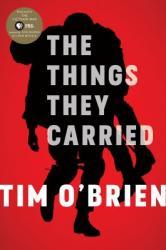
The Things They Carried is a memoir by Tim O'Brien about his experiences as an American soldier fighting in the Vietnam War. O'Brien was chosen to be drafted in 1968. This incident was extremely stressful for O'Brien who had taken a stand against the war, yet didn't want to disappoint his community. He pondered running away to Canada, but eventually decided to fight. The Things They Carried is a series of stories that are so well written. The work is a bit hard to understand just because O'Brien wrote it in a way that is not completely nonfiction. In the book, he explains this concept more in depth. Overall, I thought this book was a very well written, interesting, and educational story regarding the horrors of war from O'Brien's perspective in Vietnam.
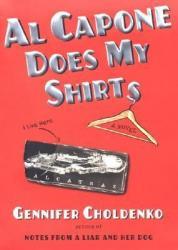
Al Capone Does My Shirts was a required summer reading book for me this year. The plot of the story was how an eleven-year old boy named Moose left his San Francisco home to live on the prison island Alcatraz because his father had to relocate there for work. Moose’s sister Natalie, who sadly suffered from autism, was trying to get into a special school, but the principal would not let her join. Moose tries to get her into the school, while trying to still play baseball and do other things on his own.
On a scale of five stars, I would give it a four for the following reasons:
1. The plot was easy to follow, but at the same time you never knew what was going to happen next.
2. The character development was excellent, because you could easily relate and understand the characters' predicaments.
3. I thought the book was clever, funny, and meaningful.
For all of these reasons, I would give Al Capone Does My Shirts by Gennifer Choldenko four stars.
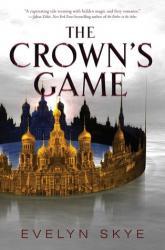
The Crown's Game is a Russian inspired fantasy set in the 1800's. It's told in duel-perspective from Vika and Nikolai, the only enchanters left in a country deprived of magic, they're both competing for the position of Imperial Enchanter through and ancient competition called the Crown's Game. A game where there can only be one winner and the other competitor is sentenced to death.
I really enjoyed the historical setting of the book. As well as the politics we get to see among the royal family. I like that it was told in duel-perspectives because it was interesting to see what both of the main characters are thinking. Also because it adds to the tension between the two characters and intrigue to the plot.
I think the book could have benefited from clearly labeling what perspective each chapter was told from, although I don't think it was that big of an issue because after a few sentences you could tell what the perspective was. Also some of the descriptions at the beginning of the book are a bit cheesy but the issue goes away as the book progresses.

"To Kill a Mockingbird" is an essential piece of literature. It tells a story that highlights the darkness of America's past, through the innocent eyes of a young girl. With this type of narrator, who almost only understands pure truth, joy, and rage, it is possible for readers to feel what she feels, and be brought into her small world (Alabama during the Great Depression) with simple, yet beautiful writing. The story itself is touching, and focuses on themes of family, racism, and solidarity. Aside from its essentiality in explaining America's history, it also can be read as a coming of age story, where the characters begin to see the harsh reality of the world in which they grew up, and in which they created lasting memories and relationships. It will make you laugh, cry, and feel.

Douglas Layton was a famous architect and a hero until the balcony of London’s Britannia Empire Theater collapsed. The balcony caused many to lose their lives and Douglas Layton served prison time for it. After serving his time in prison Douglas is on a mission to find out who was truly responsible for this tragedy. He gets a job at the same theater and gets a brand new identity to disguise himself. Douglas gathers more evidence that this incident was intentional. He must tread the water carefully and not let anyone figure out who he is. Fallen Architect is a suspenseful mystery book that will grip the reader's interest and will have them craving for more.
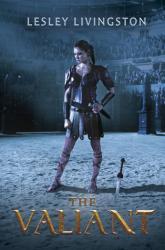
The Valiant follows the journey of a Celtic warrior from a princess to a slave to a famed gladiatrix. Throughout the story struggles with family, love, and trust. The warrior Fallon faces fierce rivals and feuds within Rome and even her ludus. Not long after arriving in her ludus she finds someone she thought was dead acting as master of the ludus. Eventually she meets Cesar the mastermind behind the fall of her home and the owner of her ludus.
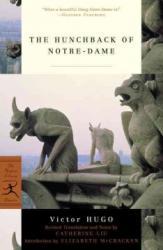
The Hunchback of Notre Dame is about four men who are captivated by a mysterious gypsy dancer. The story begins on a holiday where a play is going on until everyone becomes distracted by the gypsy girl dancing in the square. This is where we meet Esmeralda the gypsy and Gringore the playwright. Many things happen until Esmeralda ends up meeting Pheobus, a soldier, who is very egocentric, when he saves her from the deformed bell ringer - Quasimodo - and a priest named Claude Frollo. Esmeralda is soon accused of witchcraft and is sentenced to be hanged. Fortunately, she is able to find shelter in Notre Dame before that can happen. Many want to kill her, but some want to save her.
I had to read this book for school, and my English teacher recommended it. And the first chapter was not very interesting so I became skeptical, but at the end, I thought the book was really good. There are some parts where the author goes into detail about a location to better help set the scene, and this is where I struggled to focus on the book, but you should push forward because the story line is worth it. The Disney movie did not do this book justice and there is some adult-themed content in the book so I would not recommend this book to middle-schoolers or younger. I do think that sooner or later, everyone should at least give this book a try because it really made me think.
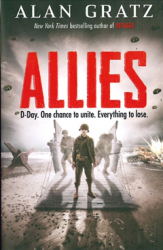
Alan Gratz has given us a gripping tale in the book Allies. The invasion at Normandy during D-Day is seen from the viewpoint of a number of allies who's stories weave in and out of the fray during that first day of fighting. True to life characters, from soldier to resistance fighters, and and edge-of-the-seat story line will compel readers age 9 -15 to keep turning pages.
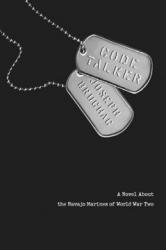
Code Talker is about a Navajo (Native American) who uses his language to help win the war. It is World War Two and the United States of America is fighting against Japan. Every code the Americans have used to send secret information has been cracked by the Japanese. The Navajo language is one of the hardest languages to learn. The Americans, knowing that, chose Navajos to make a secret code to use at war. Ned Begay (the Navajo) and his friends risk their lives, going into war, making their own secret code, and saving millions of American lives.
I really liked this book. There were some slow parts of the book where I got a bit bored. There were other parts where I couldn't put the book down. I would recommend this book to people who like war books. This book has juicy details and is based off of a true story.

The Order of the Pure Moon Reflected in Water follows a nun who joins a group of bandits trying to protect a religious relic from those who would destroy it. It's a novella, so that's really most of the book, but Zen Cho crams a ton of character development and plenty of plot into this short little read. The two main characters are so well drawn, and I absolutely fell in love with them. The banter between the bandits is loads of fun - I laughed out loud on multiple occasions. There are plenty of fight scenes. I got to learn the word wuxia (think Chinese martial arts heroes). It's very rare that I want a book to be longer, but I so wanted more of this. I'll be checking out Cho's backlist work, Sorcerer to the Crown. 4 stars - that was very good.
Thanks to Tor and Netgalley for the eARC, which I received in exchange for an unbiased review. The Order of the Pure Moon Reflected on Water is available now - put your copy on hold today!
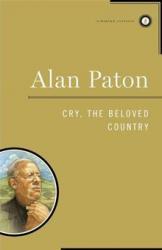
Cry, the Beloved Country is a very good novel. It depicts the lives of Reverend Stephen Kumalo and white landowner, James Jarvis, during a time of turbulence in their lives. All of the characters in the novel are extremely well written and the character development is superb. The conflict in the novel feels very realistic and thrills the reader. The moral decisions and emotions faced by the two protagonists feel very weighty and captivate the reader. Overall, the book is a great novel that I would recommend to anyone.
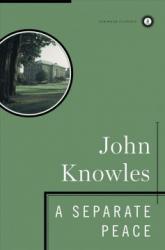
In his award-winning book, A Separate Peace, John Knowles writes a compelling story about a friendship at a New Hampshire boarding school. Revolving around the time of World War 2, two sixteen-year-old boys find themselves stuck between the brightness of youth and the solemn disparity of adulthood brought on by war. Gene is a studious serious loner who is the opposite of Phineas, the handsome and popular athlete. Although their personalities may be fundamentally different, they are best friends and roommates who do everything together. The book is narrated by Gene, the protagonist, who slowly begins to resent Phineas for his athletic talent and widespread popularity. In his mind, the once-trusted bond grows into a rivalry, and a rift begins to develop and separate them. Knowles writes the book in rich tones, laced with symbolism and meaning. As it dives deep into themes, this book is often required to be read in high school English class. It is admittedly slow moving, but still filled with marvelous lessons and morals. While I would definitely recommend reading this book at least once and praise it for its depth, personally, it was not incredibly engaging or life-changing for me. While A Separate Peace is an American classic, it lacks the emotional sentimentality that really makes a book stand out.
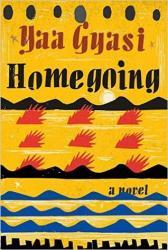
Homegoing by Yaa Gyasi follows two bloodlines, from half sisters in Ghana. Each chapter is about one descendant, switching between families somthat two chapters in a row are one generation. The book is well written and includes details that tie well into real life history or beliefs, and each chapter is in fact written in correlation with a major historical event. Through these tie-ins, the book is able to remain exciting, and each chapter could be read as a standalone short story. Each character has an important story, and is revisited in following chapters from their bloodline, either from memory or real life interactions between their children or grandchildren. In addition to the basic storytelling and history included in the book, there is also an aspect of mysticism, and values/traditions that are native to African culture, making it a solid read for increasing knowledge or understanding of Ghanan culture. For me, there are moments in the book that seem unnecessary to the general plot and sometimes vulgar, but they end up being essential in the consistency of the way the story is told. Readers are able to attach themselves to each character, story arc, anddetail, then follow them throughout the series of stories.
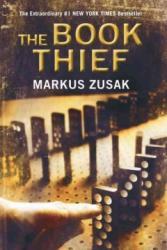
The Book Thief by Markus Zusak is my favorite book of all time. The story follows a young girl named Liesel Meminger growing up in Nazi Germany. Her love of books progresses throughout the plot, and the cast of characters she meets along the way help make the story the loveable masterpiece I know it as (personally, my favorite characters include Max Vandenburg, Rudy Steiner, and Hans Hubermann). This book is historical fiction, but I recommend it for most (if not all) readers. I typically read fantasy books, but I adore The Book Thief. The plot isn’t fast paced like adventure stories, and the events are on the ordinary side, but in my opinion the author does a brilliant job with descriptions and human connections within the book. Another reason I love this book is the use of the narrator--the way colors are described and the story is told is unique and wonderful to read. It’s a story about WWII told in a different perspective than other books we typically read at school, such as Night by Elie Wiesel or The Diary of Anne Frank. Even if you don’t particularly like the historical fiction genre, I would recommend giving this book a try. I first read it in 6th grade, but it is definitely not a story for just children. It is good for any age, and common sense media rates it for kids 13+.
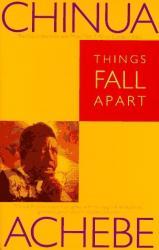
“Things Fall Apart” follows Okonkwo as he becomes a very successful man with many yams, several wives, and political power in Umuofia. The whole first part of the book focuses on his characterizing Okonkwo and showing what tribal culture was like. The author uses subtle references to Europeans to set up the main conflict of the book, European culture. Before the Europeans reach Umofia, Okonkwo accidentally kills a clansmen and is exiled. For the period of his exile, Okonkwo watches from the outside as his own village is changed radically by Christian missionaries.
Overall, I think this book is worth a read for the powerful theme, it wasn’t something I would want to read again because so much of the book was just about life in Umuofia, which was a bit mundane. Onkonkwo was also a pretty static character, there was no character development either. He just wanted to be the opposite of his father, was very strict, harsh, and closeminded. I did like the metaphors and proverbs in the book. I remember a metaphor that stood out in particular was, “Living Fire begets cold,
impotent ash.” I also enjoyed the later portion of the book where the Europeans missionaries arrive and the Onkonkwo provides a different perspective on the situation, and the theme is more clearly defined and developed.
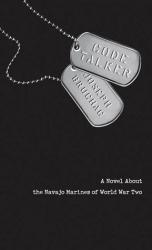
Code Talker is about the struggles and successes of a Navajo man entering the Marines. This book shows how worthless Navajo were treated by white men until they prove their value. I would have liked more detail but it does manage to describe the treatment of Navajo people around World War II. During the book the Navajos support each other as they each overcome their challenges with white men. The Navajo seem to be more civilized than white men in this book.

Lovely War by Julie Berry is such a wonderful book about two couples in the tragic and terrible days of WWI as narrated by the Greek Gods. I chose Lovely War because of my interest in historical fiction, especially historical
romances, and was not disappointed by this amazing story. The book centers on four young people who's path's cross during WWI-- British Hazel Windicott, a pianist, and James Alderidge, a would-be architect shipped off to war, Colette Fournier, a Belgian singer who lost her family at the hands of the Germans, and Aubrey Edwards, a black American solider in a jazz military band in a time of military prejudice and racial discrimination. Hazel and James meet and fall in love days before he is shipped off to the Front to face deadly combat in the WWI trenches. Distraught over the fate of James, Hazel, eager to help the war effort, enlists as a pianist at a volunteer job and meets Colette, a fellow volunteer. They become very close friends, and Colette begins to fall in love with charismatic Aubrey, who's jazz is redefining the world of music. What follows is a beautifully written novel about these four characters, their hardships, and loves.
This book is structured interestingly-- the story of these two parallel loves is narrated by the Greek goddess of love, Aphrodite, who tells the tale years later in the days of WWII to her husband, Hephaestus, god of fire and volcanos, and a few other gods to remind them what true love is and the transcendent power of love over war. The story is funny, heartbreaking, intense, and overall, beautiful. I felt as if I knew Hazel, James, Aubrey and Colette personally by the time the story is over. Julie Berry's prose is almost poetic in it's splendor, rich with meticulous descriptions about wartime France and Britain.
This book deals with elements of WWI I did not know about-- Germany's brutal and heartbreaking invasion of Belgium, and the prejudice and racial discrimination in the U.S army during WWI. I wasn't a huge fan of the
inclusion of the Greek Gods as narrators at first-- the story is strong enough to stand without it-- and until the very end, the purpose of the Gods in the story is almost irrelevant. I would have been interested to know if Berry ever had a draft of the story sans-Gods. However, reflecting back on the book, the Gods add another tier to the rich narrative, one that is appreciated more after the novel is over. That said, I know that that
inclusion was to make the book more accessible to teenage readers. Fans of Greek epics and the Percy Jackson series will enjoy the inclusion of them Gods.
The central romance and characters in this book are Hazel and James, and their relationship and connection is deeper than Colette's and Aubrey's until the end of the story. Berry dedicates more time to the relationship of Hazel and James, and it is the best story line as a result. I wish Colette and Aubrey's story would have been given more attention, as it is truly unique and unlike anything I've read, but the last pages of the book focuses solely on them which I enjoyed.
This book never lacks action and is a very quick read. I often had to remind myself to slow down so not to rush through it! Lovely War is written for teenagers, but is just as accessible for tweens and adults, truly making it a book for all ages. Lovely War is one of those special books that you read and know that your perception of the world will be changed because of it. I cannot stress how much I recommend this beautiful book. It is a marvel of the historical fiction, romance and mythology genres that everyone should read.
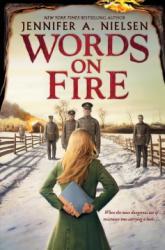
This is one of my favorite books. It is about a girl named Audra who tries to help her family but soon realizes how dangerous it can be. I like this book because it shows how people can be good in difficult situations. I picked this book because I like to learn about history but it also incorporated in what a day might be like during the World War II. The thing I enjoyed most about this book is how Audra doesn't know why her parents want her to drop off this book but she does it anyway because she trusts her parents. The ending has a great surprise of Audra's decision. (Reviewer grade:8)
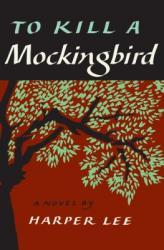
To Kill a Mocking Bird is about the racism and false accusations towards African Americans in the 1930s. The book is for a more mature reader because of the language used and some of the ideas that are introduced. I would highly recommend this book to anyone interested in learning more about the racial prejudice in the south in a book with a good plot. The characters are also relatable to a reader which I really enjoyed. Overall I think Lee did an amazing job writing this book.
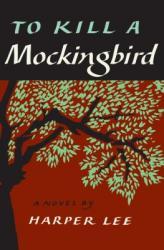
I read this book my freshman year of high school and there are some really interesting parts to this book involving suspense, murder and mystery but the book can be a little confusing if you don’t really pay attention. This book is very well written as it’s showed us how it was during this time period, giving us a whole perspective on how the characters were feeling at this point of time. The characters in this book do have to deal with a couple of problem which some don’t really go their way for example the whole situation with Tom Robinson. Although this book is well written it does carry some inappropriate language include a very discriminatory word, but you do have to keep in mind that this book was written in a very controversial time where saying the n-word wasn’t really frowned upon (not say that is was right). I wouldn’t recommend this book for children because it’s does deal with murder and rape but other than that it is a very good book.
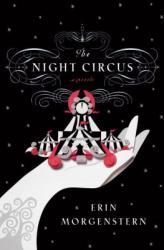
The Night Circus is the enthralling tale of a magical circus called Le Cirque does Rêves, which appears mysteriously and is open only at night. But there’s much more to the Circus of Dreams than meets the eye. The apprentices of two powerful magicians, bound to each other by fate and a deal made when they were children, must prove themselves. Soon the lives of everyone involved with the circus hang in the balance as the young magicians fight for victory—and love. Le Cirque de Rêves is a beautiful, enchanting, and intricate setting, each detail magically realistic. Morgenstern has
created an enthralling plot, with twists and turns and surprises waiting around each corner. This novel is perfect for anyone who enjoys a good fantasy or romance.
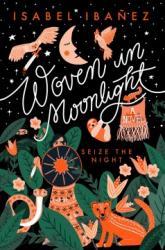
Ximenia Rojas has been the decoy for Condesa Catalina ever since the usurper Atoc overthrow the Illustrarians a decade ago. Ximenia's family, along with the Condesa's, perished during the civil war, and Ximenia and her fellow Illustrians want revenge. When Atoc summons the Condesa to the palace to be his bride, Ximenia goes in Catalina's place and uses her weaving magic to send messages to the Illustrians via tapestry. With only eight weeks before the wedding, Ximenia must find intel about a magical gem that is the Illustrian's only hope.
My literary 2020 is off to a great start with this gem of a historical fantasy YA novel! I went in with fairly low expectations as 2019 was, on the whole, not a great year for YA fantasy. This was very good and felt like something of a course correction. The "historical" aspect covers Bolivian politics and the introduction of cocaine, at least somewhat (I know nothing about Bolivia and the eARC didn't have an author's note at the end, but the author does reference her two Bolivian parents) and deftly weaves a story of magic, moonlight and betrayal. The moon magic is subtle, but well utilized. Ximenia's ability is, for lack of a better phrase, quite cool. The author took a familiar story of rebellion and a headstrong girl and combined those seemingly stale tropes with magical realism and Bolivian flavor to create a book that felt like something new. The romance was earned. The main character grows a lot throughout the course of the book. Ximenia's story is tied up by the end, but there's an intriguing jungle based thread that's left dangling (not a spoiler!) that I'd be willing to bet will be a second book. I'll read it.
Also, I dare you to read this book and not want some tasty Bolivian treats. The food sounds amaaaaaaaaaaazing and it's mentioned a lot.
TLDR: Woven in Moonlight takes a familiar tale of revolution and spices it up with excellent character development and creative magical realism. I'm having trouble thinking of something to compare it to, because I like it better than most books that I've read that are similar (The Bird King by G. Willow Wilson for example - this is in the same zone, but I enjoyed it a lot more). Recommended for readers who like their fantasies to be revolutionary (ha) with a strong female lead and a touch of magic. 4 stars - I really liked it.
Thanks to Netgalley and Page Street Books for the eARC, which I received in exchange for an unbiased review. Woven in Moonlight is available for purchase or you can put your copy on hold today!
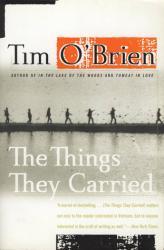
The Things They Carried follows through the perspective of a soldier within the 23rd Infantry Division. Enlisted during the Vietnam War, the book covers over the soldier's, as well as the platoons experiences throughout. The Things They Carried is a collection of stories that correlate to one another, bringing an ultimate immersion to those that are interested of any war, or historical context.
The Things They Carried is a book that has a deeper insight within the emotional, mental, and physical state of the soldiers that went through the Vietnam War. Having a darker and more serious tone than other novels, it is one that stands out and deserves recognition.
Reviewer Grade: 11
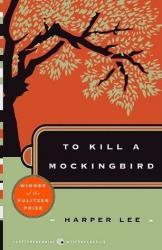
“It’s a sin to kill a mockingbird”. Harper Lee writes a beautiful and provocative narrative in To Kill a Mockingbird in order to create a conversation about relevant themes that affect our world. The story follows Scout and her brother Jem as their father, Atticus, defends an African American man named Tom Robinson in court for raping a young white woman.
Meanwhile, the children meet a new boy named Dill, and are curious about their neighbor, “Boo” Radley. The book deals with intense themes such as racial injustice, class, and growing up.
When I first read this book in 9th grade, I didn’t care too much for it. I enjoyed it, but I didn’t think it was something that I could read again.
But I was wrong. While re-reading this book, I discovered why it is a classic. The book deals with serious issues while still remaining eloquent and poetic. I adored Scout’s character and her development seen through her interactions with Boo Radley. I thoroughly enjoyed Harper’s writing style and her ability to create distinct and well rounded personalities for each of her characters. I believe that this book should be read both in schools and outside of them because of its powerful and controversial narrative.
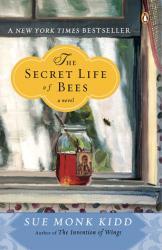
Phenomenal. That is one of the best words I can use to describe this book. The secret life of bees is an amazing story about a girl who leaves her abusive home with her housekeeper (1950s-60s era) and finds herself living with three sisters who make honey. A story bursting with vivid description and creative storytelling, the secret life of bees draws you in and keeps you there until you are suddenly done with the book. Truly an amazing story that shows that the family you're born with isn't always the family you end up with.